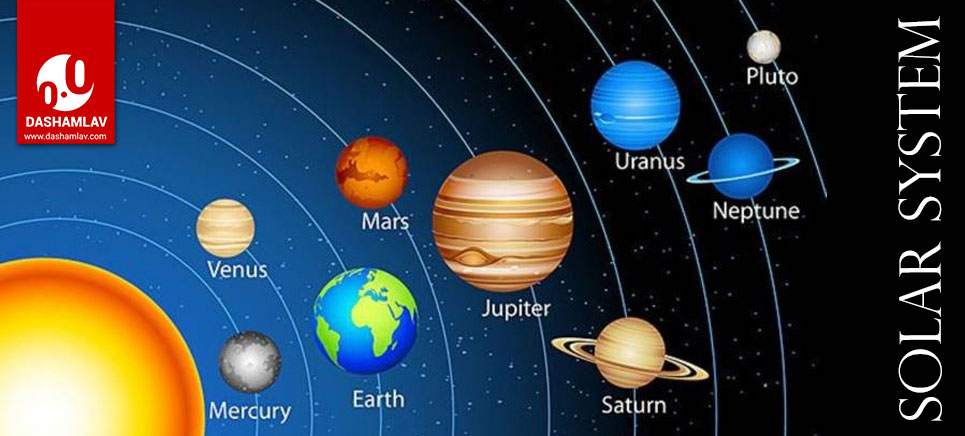A lot of people learnt from their school books that there were a total of nine planets in our solar system. However, in the present times, we often hear that the number of planets is eight as Pluto has been demoted to a status of dwarf planet. People often ask whether Pluto is a planet or not? Well, the short answer is, No. Pluto is no longer considered a planet and thus Neptune is the farthest planet from the Sun. Let’s learn interesting facts about Pluto.
1. Pluto is NOT a Planet
On 24 August 2006, the International Astronomical Union (IAU) officially defined a planet as a celestial body that (a) is in orbit around the Sun, (b) has sufficient mass for its self-gravity to overcome rigid body forces so that it assumes a hydrostatic equilibrium (nearly round) shape, and (c) has cleared the neighbourhood around its orbit.
Pluto failed to meet the third criterion and was, thus, removed from the list of planets.
2. Pluto was Reclassified as a Dwarf Planet
IAU also officially defined a dwarf planet as a celestial body that (a) is in orbit around the Sun, (b) has sufficient mass for its self-gravity to overcome rigid body forces so that it assumes a hydrostatic equilibrium (nearly round) shape, (c) has not cleared the neighbourhood around its orbit, and (d) is not a satellite.
On the basis of this definition, the IAU resolved that Pluto be considered a dwarf planet. Thus, from 24 August 2006 onward Pluto is not considered a planet but a dwarf planet.

3. Pluto is a Member of Kuiper Belt
Kuiper Belt is a ring of bodies beyond the orbit of Neptune. Now, Pluto is considered part of this belt. Pluto is the first and largest body found so far in the Kuiper belt.
4. Discovery of Pluto
In late 19th century, astronomers found that the orbit of Uranus was being disturbed not just by Neptune but another celestial body as well. Disturbance in Uranian orbit had led to the discovery of Neptune in 1846.
Astronomer had been trying to find the object, apart from Neptune, that was causing disturbance in Uranian orbit. In this pursuit, Clyde Tombaugh discovered Pluto on 18 February 1930.
5. Pluto is Not Planet X
During the attempts of finding a trans-Neptunian planet that was disturbing Uranian orbit, Percival Lowell named that elusive planet as Planet X. After death of Lowell, an observatory was constructed in his name. Working at the Lowell Observatory, Clyde Tombaugh finally discovered the Planet X and named it Pluto.
However, later on, with more precise data on mass of Neptune and Pluto, it was determined that Planet X did not exist because Neptune’s mass alone was enough to cause the recorded disturbance in the Uranian orbit.
6. Pluto’s Name
Pluto was named after the Roman god of the underworld. Clyde Tombaugh credited Venetia Burney, an 11 year-old schoolgirl, for suggesting the name for the newly discovered celestial body.

7. Only One Spacecraft has Ever Visited Pluto
NASA’s New Horizons is the only spacecraft to visit Pluto. On 14 July 2015, New Horizons did a flyby on Pluto and sent data and images back to Earth.
8. Many Moons
So far, five moons of Pluto have been discovered. These are Charon, Styx, Nix, Kerberos, and Hydra. Of these, Charon is the biggest one. Pluto and Charon are often considered to be a binary system because barycenter of their orbits does not lie within either body.
9. Pluto Rotates Very Slowly
Pluto takes 6 days and 9 hours to complete one rotation on its axis.
10. Pluto hasn’t Completed an Orbit Yet
Pluto takes 248 years to complete one orbit around the Sun. As it was discovered in 1930, it is yet to complete an orbit since it was discovered by the humans.
Statistics about Pluto
| PROPERTY | VALUE |
|---|---|
| Radius of Pluto | 1,188 km |
| Surface area of Pluto | 1.779 ×107 km2 (0.035 Earths) |
| Volume of Pluto | 7.057×109 km3 (0.00651 Earths) |
| Mass of Pluto | 1.303×1022 kg (0.00218 Earths) |
| Mean density | 18.54 g/cm³ |
| Perihelion (closest distance to Sun) | 29.658 AU (4.43682 billion km) on 05 September 1989 |
| Aphelion (farthest distance from Sun) | 49.305 AU (7.37593 billion km) in February 2114 |
| Length of solar day (single rotation on its axis) | 6 d, 9 h, 17 m, 36 s |
| Length of year (single revolution around the Sun) | 247.94 Earth years |
| Equatorial inclination to orbit (axial tilt) | 122.53° (to orbit) |
| Rotation speed at Equator | 47.18 km/h |
| Surface gravity | 0.620 m/s2 |
| Escape velocity | 1.212 km/s |
| Natural satellite | So far, Pluto has 5 known natural satellites: Charon, Styx, Nix, Kerberos, and Hydra |
| Composition of Pluto | Atmosphere
Nitrogen, methane, carbon monoxide |
Use the citation below to add this article to your bibliography
"Pluto, Planet or Not? Facts about a Demoted Dwarf Planet." Dashamlav.com. Web. 1 May 2025. <https://dashamlav.com/pluto-dwarf-planet-facts/>
Dashamlav.com, "Pluto, Planet or Not? Facts about a Demoted Dwarf Planet." Accessed 1 May 2025. https://dashamlav.com/pluto-dwarf-planet-facts/
"Pluto, Planet or Not? Facts about a Demoted Dwarf Planet." (n.d.). Dashamlav.com. Retrieved 1 May 2025 from https://dashamlav.com/pluto-dwarf-planet-facts/
